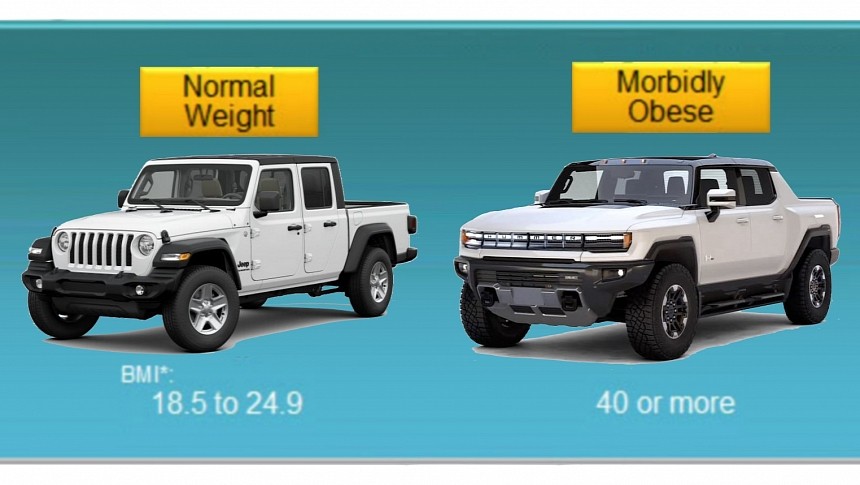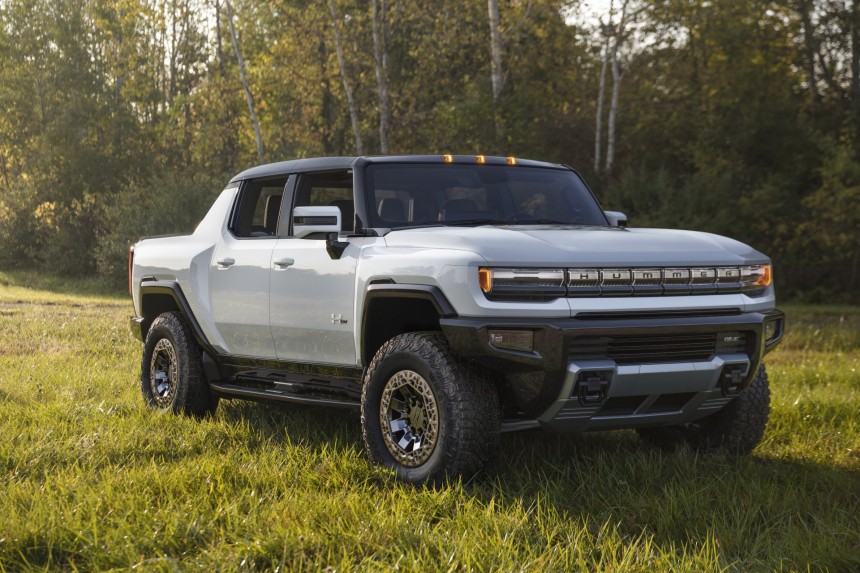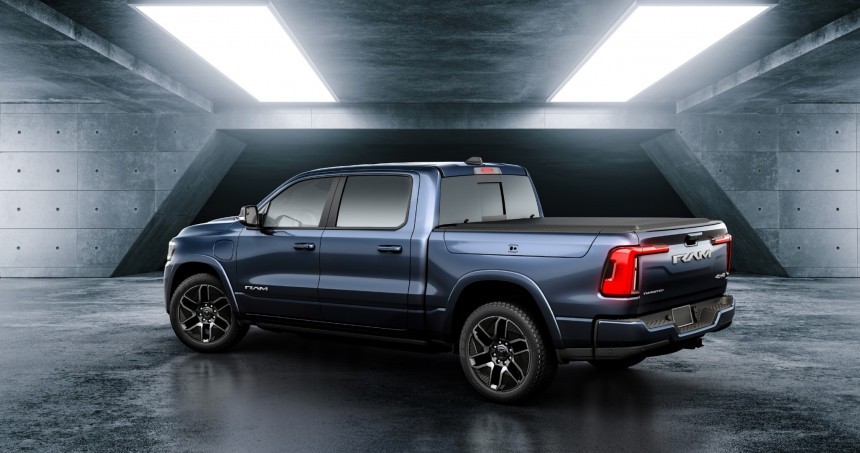The Insurance Institute for Highway Safety (IIHS) recently warned it is concerned with how heavy battery electric vehicles (BEVs) are getting. The GMC Hummer EV alone weighs 9,063 pounds (4,103 kilograms). According to the institute, BEVs crashing against similarly sized combustion-engined cars would impose serious damage to them because they are much heavier. Engineers are now bringing up a new worry to the list.
According to The Telegraph, the British Parking Association verified several older parking buildings and discovered they might not be able to handle too many of these BEVs. Many of these facilities were built in the 1960s and 1970s – when vehicles tipped the scale a lot lower than what BEVs currently weigh. It is worth remembering that a first-generation 1976 Ford Fiesta had a curb weight of 715 kg (1,576 lb). The lightest seventh-generation car released in 2017 weighs 1,113 kg (2,454 lb). BEVs only make that worse.
The Telegraph gives three examples: the Tesla Model 3, the Audi e-Tron, and the Nissan LEAF. According to the British newspaper, they tip the scale respectively at 1,672 kg (3,686 lb), 2,351 kg (5,183 lb), and 1,580 kg (3,483 lb). Now imagine an entire fleet of these machines willing to park in old buildings, some of which may be poorly preserved.
That made the association elaborate new guidance recommending a higher design loading limit for concrete floors to be higher than they are today. Instead of 2.5 kilonewtons per square meter, they should present at least 3 kN/m2. For older parking buildings, the British Parking Association suggests the owners should inspect their properties and even impose weight limits if they feel these new BEVs will represent a risk.
Chris Whapples, the structural engineer who wrote the new British Parking Association guidance, said that this should not be a problem considering several facilities already impose height limits. The main difference is that there are easy ways to see if a vehicle is too tall to enter a parking spot. When it comes to weight, you either need to know the precise weight of all BEVs or you have to place a vehicle scale somewhere. That may not be a feasible option for most parking buildings.
Supposing these parking buildings adopt these measures, they may soon face a customer shortage. The UK recently published the Zero Emissions vehicle mandate, which will eventually ban sales of new vehicles powered solely by internal combustion engines by 2030. If the British government’s plans do not change, it may not take that long for most customers to drive much heavier cars than they do today.
The Telegraph’s article approaches an issue that may be limited to parking buildings, but BEV weight issues extrapolate that scenario. What about bridges? Will they deal well with the added weight? Are they being well preserved? Several countries currently facing the EV shift have issues with road infrastructure maintenance. Collapsing bridges are not as rare as they should be, which makes the subject even more pressing. Potholes are made worse by heavy vehicles as well. Roads designed to deal with lighter vehicles may not handle a massive number of these larger machines.
The British Parking Association may have anticipated a broader problem affecting way more than its members. One of these associates said it is more concerned about charging infrastructure than if their buildings will deal well with the heavier vehicles they were created to protect. That reminds us that electric cars also need more than just sturdier buildings. In the UK, complaints about the charging infrastructure are increasing. But there is another challenge ahead involving these machines.
Fuel taxes are used in several countries to fund road maintenance. BEVs do not pay them for obvious reasons. Those governments that depend on this tax are between a rock and a hard place. While they want to stimulate customers to buy electric cars, they will also run out of money to fix road infrastructure if they do not find an alternative way to compensate for fuel taxes. As a consequence, it will be harder to repair and keep bridges and highways in pristine condition. Most are already pretty far from that and are happy enough not to have too many potholes to fix.
As I have mentioned in my article about the automotive Easter (or Passover, if you prefer), we are ahead of a profound transformation that will affect many more things than just the way we refuel our cars. There are implications we are just starting to grasp, such as the need for stronger parking buildings (reading this article requires a subscription) and roads. There must be several other ramifications to this fundamental change that we have yet to discover. As much as we hope that none of them will be insurmountable, we may just be sure about that when they are already unavoidable. Let’s hope that is not the case.
The Telegraph gives three examples: the Tesla Model 3, the Audi e-Tron, and the Nissan LEAF. According to the British newspaper, they tip the scale respectively at 1,672 kg (3,686 lb), 2,351 kg (5,183 lb), and 1,580 kg (3,483 lb). Now imagine an entire fleet of these machines willing to park in old buildings, some of which may be poorly preserved.
Chris Whapples, the structural engineer who wrote the new British Parking Association guidance, said that this should not be a problem considering several facilities already impose height limits. The main difference is that there are easy ways to see if a vehicle is too tall to enter a parking spot. When it comes to weight, you either need to know the precise weight of all BEVs or you have to place a vehicle scale somewhere. That may not be a feasible option for most parking buildings.
The Telegraph’s article approaches an issue that may be limited to parking buildings, but BEV weight issues extrapolate that scenario. What about bridges? Will they deal well with the added weight? Are they being well preserved? Several countries currently facing the EV shift have issues with road infrastructure maintenance. Collapsing bridges are not as rare as they should be, which makes the subject even more pressing. Potholes are made worse by heavy vehicles as well. Roads designed to deal with lighter vehicles may not handle a massive number of these larger machines.
Fuel taxes are used in several countries to fund road maintenance. BEVs do not pay them for obvious reasons. Those governments that depend on this tax are between a rock and a hard place. While they want to stimulate customers to buy electric cars, they will also run out of money to fix road infrastructure if they do not find an alternative way to compensate for fuel taxes. As a consequence, it will be harder to repair and keep bridges and highways in pristine condition. Most are already pretty far from that and are happy enough not to have too many potholes to fix.
As I have mentioned in my article about the automotive Easter (or Passover, if you prefer), we are ahead of a profound transformation that will affect many more things than just the way we refuel our cars. There are implications we are just starting to grasp, such as the need for stronger parking buildings (reading this article requires a subscription) and roads. There must be several other ramifications to this fundamental change that we have yet to discover. As much as we hope that none of them will be insurmountable, we may just be sure about that when they are already unavoidable. Let’s hope that is not the case.








































